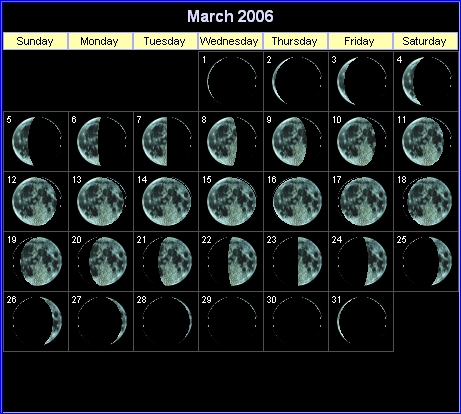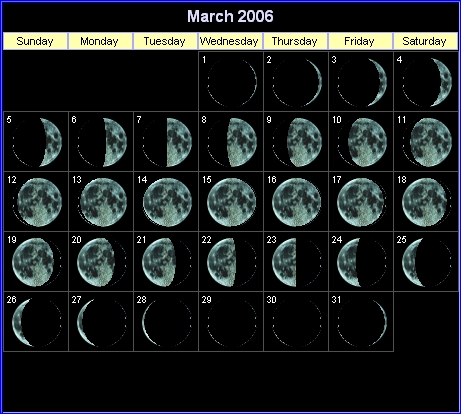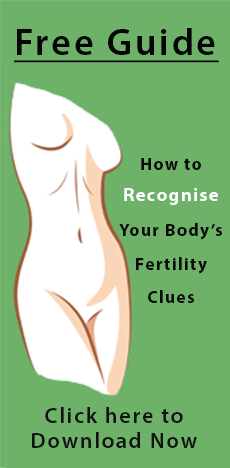It is the moon’s angle to the sun as it journey’s around its orbit sun which gives the Moon its different shapes.
As the moon separates from the sun, it becomes more or less visible to us on Earth depending upon where it is in relation to the sun or how much of the suns light it is reflecting back to us on Earth. The moon itself gives out no light at all.
At a new moon when the sun and moon are together, it is not reflecting any of the suns light, therefore we cannot see the moon. At a Full Moon, we can see the whole face of the moon reflecting back to us the light of the sun.
The moon phases appear differently to us on Earth depending upon which side of the equator we live on.
If you live in the Southern Hemisphere
Australia, New Zealand or anywhere else South of the Equator the moon will wax and wane according to this pattern.

But if you live in the Northern Hemisphere, above the equator the moon will wax and wane to this pattern.

So when you are observing the moon or doing the visualisations outlined in this Guide take note of the correct pattern for you.
To make it just that little bit easier, you can go to the following pages at the website which will give you a visual image of what the moon looks like in real time as it goes through its phases each month – for the Southern hemisphere and the Northern hemisphere.



